QuestionQUESTION: my turtle is not eating and its February. Shes about the size of a small grapefruit and she has been yawning a lot. she has had bubbling from the nose. oh yeah and she is a red footed tortoise. i have a zilla UVB light i have had her for 4 months. we usually have her eating apples, lettuce, tomatoes, watermelon, and some pellots.and she has been sleeping a lot. i was wondering what's wrong please help, I'M SCARED!!!!!!!
ANSWER: Hi Morgan,
You need to take your tortoise to a vet as soon as possible. The yawning and bubbling indicate a respiratory infection, which needs to be treated with antibiotics. Don't delay, and don't try to treat this at home, because RIs can become serious quickly, especially in small tortoises, and will eventually lead to death.
You didn't give me much information, but redfoots need a large enclosure (NOT a tank) that allows air circulation. The best substrate is a mix of coir, playsand, and sphagnum moss, and should be kept quite moist. There should be a basking area of 90-95 degrees (substrate temperature, not air temp), and then cooler areas of about 75 degrees. The Zilla UVB bulb is useless--it has almost no UVB output.. I'd replace it with a ZooMed Powersun, which will give both heat and UVB. It does need to be changed once a year.
You need to change her diet. Redfoots are omnivores. They should be fed a base diet of greens (dandelion, turnip, mustard, kale, collards, etc.), with fruit a few times a week, veggies a couple of times a week, and animal protein once a week or once every couple of week. Animal protein can include pinky mice, superworms, earthworms, boiled chicken or egg, boiled shrimp, etc. Lettuce is OK once in a while, but it's not very nutritious. Watermelon should be avoided because it's high in water and low in nutrition. Don't feed any pellets--a varied, more natural diet is best. Put a cuttlebone in the enclosure so your tortoise can nibble it for extra calcium as needed.
The most important thing right now is to get your tortoise to the vet for treatment, and then make the necessary changes to her care.
For more information, see:
http://tortoiseyard.com/
http://redfoottortoise.com/
---------- FOLLOW-UP ----------
QUESTION: We are going to the vet today and what is the moss that we need and where do we find it
ANSWER: You want sphagnum moss (not peat moss). Look for it in the section that carries orchid bark and such at Lowe's or Home Depot. Last time I got it, the brand was Mosser Lee. Mix it with the coir (which is Ecoearth or Bed-a-Beast; it comes in a brick that expands when you soak it in water) and playsand, about 1/3 of each. Then keep it moist.
The vet probably gave you Baytril for the infection. You can give it orally or via injection--the vet will show you how. If you have any other questions, please post back!
---------- FOLLOW-UP ----------
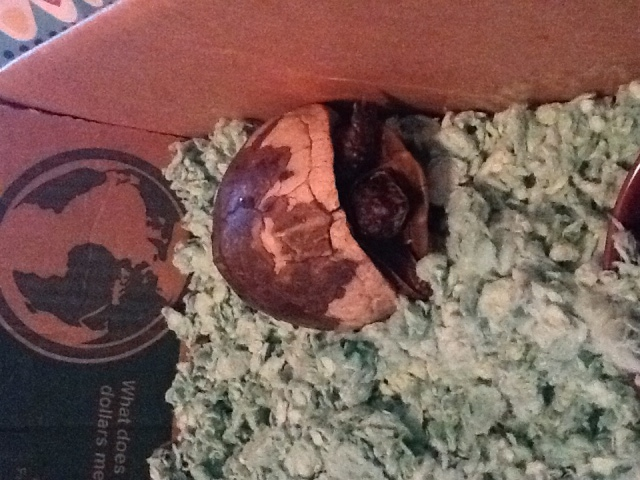 My tortoise
My tortoise
QUESTION: Thanks and the vet says she's really dehidrrated and is wired to me becaus she sits in her water a lot and sticks her head in and drinks but she has not been very active lately to so thanks for all the help and they think its a respiratory infection to. They think there going to give her antibiotics and how do we treat metabolic bone disease in their shell?
AnswerHi Morgan,
Are you certain you have a redfoot? It's really hard to tell from the picture, but it doesn't look at all like a redfoot should at that size. I don't see any bright colors on the legs or head, for instance. Was the shell like that when you got it? All those bare spots indicate something serious has been going on for a while.
Basking lights are very drying, so unless there's a lot of moisture in the substrate they can dehydrate pretty easily. That's why you need substrate that will hold moisture well. A lot of pet stores tell people to put redfoots on Reptibark, but that's a poor substrate for tortoises. It looks like you have her on dampened Carefresh right now--that's OK until you can get the right substrate, but if you've been keeping her on dry Carefresh, it's really dehydrating for tortoises, and that may also have been part of the problem. Drinking and soaking is important, but there has to be some moisture in their environment. Redfoots are a tropical species, so it's pretty wet a good deal of the time.
Put a cuttlebone in the enclosure, and get the UVB bulb I told you about (the ZooMed Powersun). Don't get a different bulb, no matter what a pet store tells you, because a lot of them are worthless. I have friends who test UVB bulbs, and this one is good. You can order one online from EntirelyPets (or Amazon) for a good price, and you'll get it in a few days. The light should stay on 12-14 hours a day, and then go off at night. That will help give her proper UVB. When the weather warms up (70s) outside, build her an outdoor pen for during the day. Natural sunlight is the best way to stop metabolic bone disease from getting worse. Luckily, you live in California, so she should be able to spend quite a bit of time outside.
http://www.amazon.com/Zoo-Med-PowerSun-Mercury-Vapor/dp/B0002AQDJK/ref=sr_1_1?ie
http://www.entirelypets.com/zoomedpowersun100.html
PS. Could you post a picture of the underside of your tortoise? I think you may actually have a box turtle--see the keel (ridge) on the shell? That's very characteristic of box turtles, and redfoots don't have it. Where did you get your tortoise?


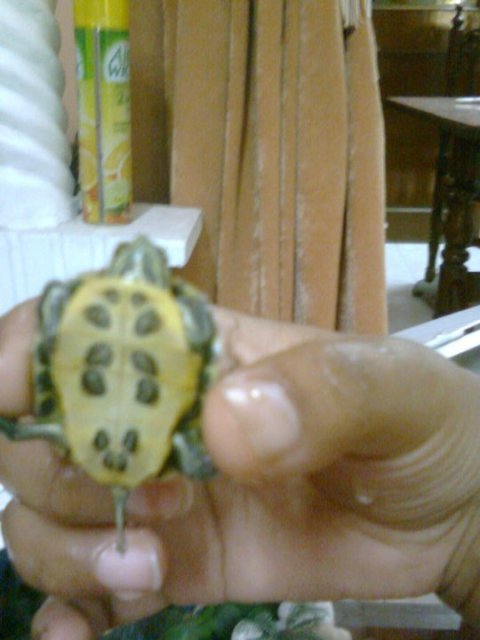 turles pregnancy...
Question
gangster
i have bought a red eared slider turt
turles pregnancy...
Question
gangster
i have bought a red eared slider turt
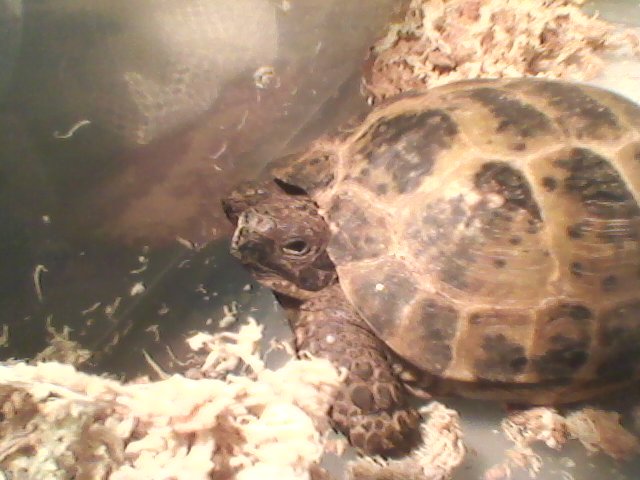 Russian Tortoise Questions
Question
Ayden the Tortoise
Hello, my name is Mi
Russian Tortoise Questions
Question
Ayden the Tortoise
Hello, my name is Mi
 flakey substance on turtles neck and legs
Question
Red ear slider
red ear slider about 9 mos. 20
flakey substance on turtles neck and legs
Question
Red ear slider
red ear slider about 9 mos. 20
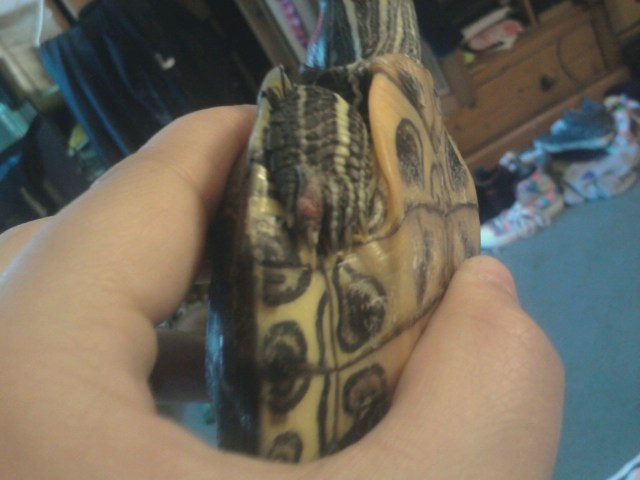 Turtle skin problem
Question
Paw bleeding
My turtle Squirtle is a Red Ear S
Turtle skin problem
Question
Paw bleeding
My turtle Squirtle is a Red Ear S
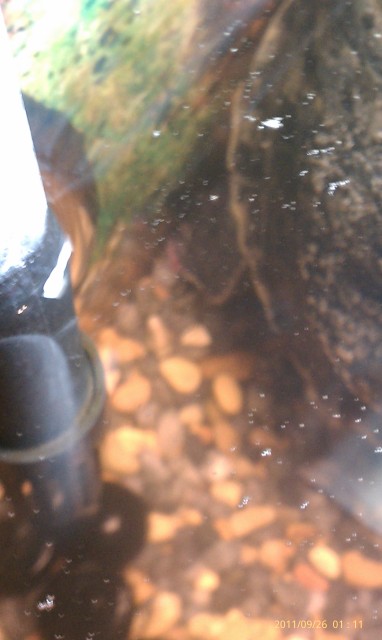 red ear slider injury
Question
ouch
I found the turtle about 2 years a
red ear slider injury
Question
ouch
I found the turtle about 2 years a